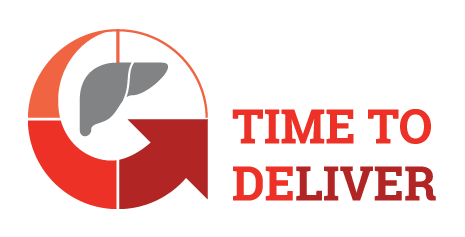Alcohol
Increased alcohol consumption has been shown to be related to liver disease.2 The European Union is perhaps the heaviest drinking region in the world.3 Particularly concerning is that rates of hazardous drinking in younger people have increased, and more underage young people are drinking alcohol than before.4
Obesity
Obesity is one of the main risk factors for developing non-alcoholic fatty liver disease (NAFLD). Both general obesity and central obesity increase the risk.5 Worldwide, obesity has almost tripled in the last 45 years, with recent figures showing that 13% of adults were obese.6
Hepatitis
If left untreated, hepatitis can lead to cirrhosis.7 A research group estimated that in 2010, 248 million individuals were positive for hepatitis B.8 Another group estimated that in 2015, 71.1 million individuals were positive for hepatitis C.9
Hepatitis B and C are both transmitted through blood and can damage the liver. Both types can be treated with antivirals. If left to develop, however, they can cause liver cirrhosis. Although a vaccine exists for hepatitis B, and is routinely used for high-risk groups, there is currently no vaccine for hepatitis C.7
Preventative Measures
The World Health Organization (WHO) calls for the development of policies that will encourage a decrease in alcohol consumption and reduce the level of alcohol-related disease.10 Their suggestions include improving access to education on the harms of alcohol, introducing screening for harmful drinking levels, implementing stricter marketing regulations for alcohol, and establishing minimum alcohol prices.11
In terms of addressing obesity, the WHO recommends strategies to promote healthier choices and reduce obesity.12 They have also called for improved global strategies on eliminating viral hepatitis.13
To tackle the problem of liver disease, we must address these risk factors.1

Additional Information
References:
- L Pimpin et al., Journal of Hepatology. 2018;69:718–735
- C Hart et al., BMJ. 2010;340:1240
- World Health Organization. Alcohol Use Data and Statistics. Available at: https://www.euro.who.int/en/health-topics/disease-prevention/alcohol-use/data-and-statistics (Last accessed: October 2020)
- OECD. Tackling Harmful Alcohol Use – Economics and Public Health Policy. Available at: https://read.oecd-ilibrary.org/social-issues-migration-health/tackling-harmful-alcohol-use_9789264181069-en#page1 (Last accessed: October 2020)
- Q Pang et al., World Journal of Gastroenterology. 2015;21(5):1650–1662.
- World Health Organization. Obesity and Overweight. Available at: https://www.who.int/news-room/fact-sheets/detail/obesity-and-overweight (Last accessed: October 2020)
- NHS. Hepatitis. Available at: https://www.nhs.uk/conditions/hepatitis/ (Last accessed: October 2020)
- A Schweitzer et al., 2015;386(10003):1546-55
- S Blach et al., The Lancet Gastroenterology and Hepatology. 2016;2(3):161-176.
- World Health Organization. Framework for alcohol policy in the WHO European Union. 2006.
- World Health Organization. 10 areas governments could work with to reduce the harmful use of alcohol. Available at: https://www.who.int/news-room/feature-stories/detail/10-areas-for-national-action-on-alcohol (Last accessed: October 2020)
- World Health Organization. Controlling the Global Obesity Epidemic. Available at: https://www.who.int/nutrition/topics/obesity/en/ (Last accessed: October 2020)
- World Health Organization. Hepatitis – Global Health Sector Strategies for HIV, viral hepatitis, STIs, 2016-2021. Available at: https://www.who.int/hepatitis/strategy2016-2021/en/ (Last accessed: October 2020)
May 2021. GL-HEP-XIF-2000180




